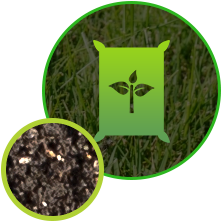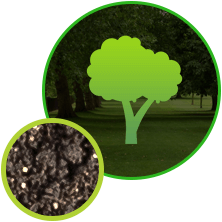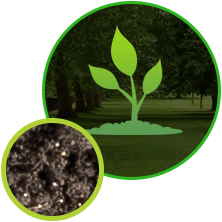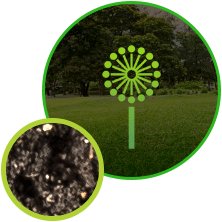LAWN EXPERTS
GET THE LAWN CARE YOU NEED

When it comes to lawn care, eliminating weeds is only the start. Our lawn care experts target hundreds of weed varieties to quickly and efficiently ensure your yard is weed-free. But that’s not all our lawn care services in Atlanta have to offer! Learn more.

We offer several organic lawn care options for your lawn maintenance needs. Out organic lawn care options provide an eco-friendly and natural approach to lawn care services, from natural fertilizers to natural weed controls, ensuring your yard is well-kept and safe for your family to enjoy. Learn more!

Our 100% natural fertilizers, alongside our organic insect control, are sure to create “A Difference You Can See.” We offer an eco-friendly approach to tree and shrub care and landscaping.

Today’s homeowners are looking for new ways to reduce toxins in their home and outdoor living environments. Check out our organic weed control.
REASONS YOU SHOULD HAVE YOUR YARD TREATED TODAY
- Mosquitoes bite!
- Mosquitoes are common carriers of many illnesses and diseases.
- Mosquitoes are annoying and make your yard & outdoor areas less enjoyable.
CALL TODAY TO BOOK YOUR MOSQUITO CONTROL SERVICES
THE BEST IN ATLANTA LAWN CARE!
WE ARE RATED #1 IN CUSTOMER SATISFACTION
So what can WeedPro® Lawn Care do for you? With our Traditional Plus lawn care service, we’ll turn your Georgia clay soil into fertile ground for green grass and lush landscaping design. Get the same great service with our organic products or stick to our time-tested traditional methods. From lawn care to fertilization and weed control products, our Traditional Plus lawn care service ensures every inch of your landscaping looks perfect, year-round. We also offer tree and shrub services as well as flower planting services, allowing you to have the lush and vibrant lawn of your dreams. We’re the lawn care service experts who can make your lawn the envy of everyone in the neighborhood!
Based in Alpharetta, Georgia, WeedPro® Lawn Care’s services in Atlanta are available throughout the metro area including Austell, Cumming, Decatur, Duluth, Buford, John’s Creek, Lawrenceville, Mableton, Marietta, Milton, Norcross, Roswell, Tucker, Smyrna, Snellville, and Sugar Hill. We can handle any lawn care service you throw at us, so get in touch with us today!
WEEDPRO® LAWN CARE HAS BEEN HONORED BY HOME REPORTS AS BEST PICK FOR LAWN CARE IN ATLANTA FOR SEVEN YEARS RUNNING.
Our Customers Have Options
At WeedPro® Lawn Care, we provide our customers with options they’ll love. Whether you’re interested in organic and natural products for your lawn, or our traditional methods, our team is happy to work with you. Until now, there have been very few organic lawn care options! But our team has designed tried and true methods to ensure your yard thrives with the use of organic and natural options. WeedPro® Lawn Care has developed new and exciting organic lawn care programs that will reduce or completely eliminate the amount of synthetic chemicals used in your lawn and landscape. Contact us today to get started.
Areas We Serve
Alpharetta, Georgia
Cumming, Georgia
Duluth, Georgia
Dunwoody, Georgia
Johns Creek, Georgia
Milton, Georgia
Norcross, Georgia
Roswell, Georgia
Sandy Springs, Georgia
Suwanee, Georgia
Atlanta, Georgia

